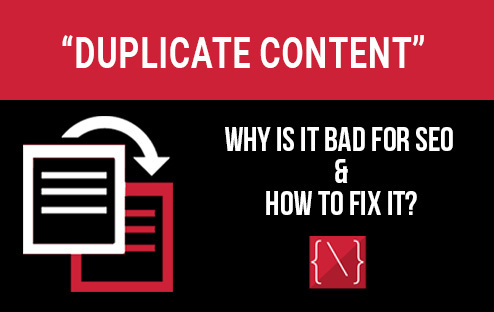
Nowadays, a strong SEO (Search Engine Optimization) strategy is no longer optional – it’s essential for driving organic traffic, increasing brand awareness, and achieving your online business goals. But with Google’s algorithms constantly evolving, staying ahead of the curve can feel overwhelming.
This guide will equip you with the latest SEO tactics and best practices for 2024, helping you take your website’s ranking and visibility to the next level.
Understanding Google’s SEO Landscape in 2024
Google’s core objective is to provide users with the most relevant and valuable search results. To achieve this, they consider a complex web of factors, including:
- Content Quality and Expertise (E-A-T): Google prioritizes content created by experts and demonstrably trustworthy sources. Focus on in-depth research, fact-checking, and showcasing your niche authority.
- User Experience (UX): A website’s ease of navigation, mobile-friendliness, and loading speed all significantly impact SEO.
- Search Intent: Go beyond basic keyword targeting. Understand the “why” behind user searches and tailor your content to answer their specific questions and needs.
- Semantic Search and Voice Search: As search queries become more conversational, optimize your content for long-tail keywords and natural language.
Building a Rock-Solid SEO Strategy for 2024
Here’s a step-by-step approach to crafting a future-proof SEO strategy for 2024:
1. Keyword Research: The Foundation of Success
- Start with a Brainstorming Session: Identify relevant topics within your niche and the questions your target audience might be asking.
- Leverage SEO Tools: Utilize keyword research tools like Google Keyword Planner to discover high-volume, low-competition keywords with strong commercial intent (search queries with the potential to convert visitors into customers).
- Prioritize Long-Tail Keywords: Target longer, more specific keyword phrases that demonstrate user intent and allow you to create highly relevant content.
2. Analyze Your Competitors
Identify your top organic competitors through tools like SEMrush or Ahrefs. Analyze their top-performing content to understand what resonates with your audience and identify potential gaps in their strategy.
3. Create Compelling Content That Stands Out
- Become a Thought Leader: Don’t just replicate what others are doing. Strive to create unique, informative content that offers a fresh perspective and valuable insights.
- Optimize for Readability: Structure your content with clear headings, subheadings, and bullet points for easy skimming and comprehension.
- Incorporate Multimedia: Integrate relevant images, infographics, and videos to enhance user engagement and break up text-heavy sections.
4. Master On-Page SEO for Enhanced Visibility
On-page SEO refers to optimizing the elements within your website to improve search engine ranking. Here’s what to focus on:
- Keyword Integration: While keyword stuffing is a penalty, strategically incorporating your target keywords throughout your content (title tags, meta descriptions, headers, and naturally within the text) is essential.
- Internal Linking: Create a strong internal linking structure to connect relevant pages on your website, allowing search engines to crawl and understand your content hierarchy.
- Image Optimization: Include relevant alt tags for all images, providing context and improving accessibility.
5. Build Good Backlinks
Backlinks (links from other websites to yours) remain a critical SEO ranking factor. Here are some strategies to secure valuable backlinks:
- Create Link-Worthy Content: People naturally want to link to high-quality, informative content. Focus on creating resources that others will find valuable enough to share.
- Guest Blogging: Contribute guest articles to reputable websites within your niche, including a link back to your own site in the author bio.
- Broken Link Building: Identify broken links on relevant websites and reach out to the webmaster, suggesting your high-quality content as a replacement.
6. Ensure User Experience (UX) for Long-Term Success
A website that ensures user experience is more likely to keep visitors engaged and coming back for more. This, in turn, sends positive signals to search engines. Here’s how to optimize your UX:
- Mobile-First Design: Ensure your website is responsive and delivers a seamless experience across all devices (desktop, mobile, tablet).
- Fast Loading Speeds: Nobody likes a slow website. Use caching plugins and image optimization techniques to ensure your pages load quickly.
- Clear Navigation: Make it easy for users to find what they’re looking for. So, implement a clear and intuitive website navigation structure.
- Optimize for Core Web Vitals: These Google metrics assess factors like loading speed, responsiveness, and visual stability – all crucial for a positive user experience.
- Focus on User Engagement: Keep visitors engaged with internal linking, calls to action, and interactive elements like polls or quizzes.
7. Embrace Continuous Monitoring and Adapting
SEO is an ongoing process. Here’s how to stay ahead of the curve:
- Utilize SEO Tracking Tools: Tools like Google Search Console and Google Analytics provide valuable insights into your website’s performance, keyword ranking, and user behavior.
- Stay Updated on Google Algorithm Changes: Google’s algorithm is constantly evolving. Regularly check industry publications and SEO resources to stay informed about the latest best practices.
- Content Refreshment is Key: Regularly review and update your top-performing content to maintain its relevance and keep Google’s crawlers coming back for more.
By following these comprehensive SEO strategies, you can take your website to the next level in 2024. Remember, SEO is a marathon, not a sprint. Focus on creating high-quality content, optimizing user experience, and building a strong online presence – and you’ll see your website climb the search engine rankings and attract a steady stream of organic traffic.

The world of SEO is constantly evolving, and with the introduction of Google Bard, a new wave of possibilities is emerging. This innovative AI tool, built on Google’s LaMDA language model, promises to be a game-changer for businesses looking to optimize their online presence and climb the search engine rankings. But how exactly can Bard transform your SEO strategy? Let’s explore some the exciting ways this AI assistant can empower your content creation, website optimization, and overall SEO approach.
- Semantic Understanding: Traditional SEO strategies often revolved around keyword optimization, with a focus on stuffing content with targeted keywords. However, Google Bard emphasizes semantic understanding, meaning it can discern the underlying meaning of words and phrases within the context of a sentence or paragraph. This allows for more natural and engaging content creation, rather than forced keyword insertion.
- Intent-Based Search Results: With Google Bard, search results are not just based on exact keyword matches but also on the intent behind the search query. By analyzing the context of the query, including the user’s search history, location, and other relevant factors, Google Bard delivers more personalized and relevant search results. As a result, businesses can tailor their SEO strategies to better align with user intent, leading to higher conversion rates and improved user satisfaction.
- Natural Language Queries: The rise of voice search and conversational interfaces has transformed the way people interact with search engines. Google Bard is adept at understanding natural language queries, including long-tail keywords and conversational phrases. This means that businesses can optimize their content for a wider range of search queries, capturing more organic traffic and catering to the growing number of voice search users.
- Content Quality and Relevance: In the era of Google Bard, quality reigns supreme. Search engines prioritize content that is not only relevant to the user’s query but also authoritative, comprehensive, and well-written. By focusing on creating high-quality content that provides value to your target audience, you can improve your chances of ranking highly in search results and establishing your brand as a trusted source of information.
- User Experience Optimization: Beyond content relevance, Google Bard also takes into account factors related to user experience, such as page load speed, mobile-friendliness, and overall website usability. By optimizing your website for these factors, you can enhance the user experience and increase the likelihood of retaining visitors and encouraging repeat visits.
- Structured Data and Schema Markup: Leveraging structured data and schema markup can provide search engines with additional context about your content, helping them understand its relevance and significance. Google Bard is adept at interpreting structured data, allowing businesses to enhance their search listings with rich snippets, knowledge graphs, and other interactive elements that can attract more clicks and improve visibility in search results.
- Adaptability and Evolution: As with any technology driven by machine learning, Google Bard is constantly evolving and improving over time. This means that SEO strategies must also adapt and evolve to keep pace with the latest developments. By staying informed about updates and best practices related to Google Bard, businesses can maintain their competitive edge and continue to reap the benefits of effective SEO.
In conclusion, Google Bard has the potential to transform the way businesses approach SEO. By using its AI capabilities, businesses can enhance their content creation process, improve keyword research, optimize meta tags and descriptions, enhance user experience, and stay up to date with algorithm updates. Embracing this revolutionary tool can give businesses a competitive advantage in the ever-evolving world of SEO, leading to improved rankings, increased organic traffic, and ultimately, better business outcomes.
ALSO READ: How Are The Keywords Determined For SEO Needs?

SEO or search engine optimization is a critical part of digital marketing. The process of optimizing your website to rank higher on search engine result pages (SERPs) is what SEO is all about. One of the most important aspects of SEO is determining the right keywords for your website.
Keywords are the words or phrases that people use to search for a particular service or product on search engines. Keywords play an essential role in SEO because they help search engines to understand the context and theme of your website. Using the right keywords can help improve your website’s visibility, drive traffic, and ultimately increase conversions.
So, how are the keywords determined for SEO needs? Here are some of the ways you can determine the right keywords for your website:
- Relevance: The chosen keywords must be highly relevant to your business, website content, and target audience. Targeting irrelevant keywords might attract traffic, but it won’t convert if it doesn’t match your offerings.
- Search Volume: This refers to the average number of times a particular keyword is searched for in a given period. Ideally, you want keywords with a decent search volume to attract a sizable audience. However, it’s not always about chasing the highest numbers.
- Competition: Some high-volume keywords might be extremely competitive, making it difficult for new websites to rank well. Consider the level of competition you’re facing when choosing keywords.
- Search Intent: Understanding the searcher’s intent behind a keyword is crucial. Are they looking for information, trying to compare products, or ready to make a purchase? Optimizing your content for the searcher’s intent will improve its effectiveness.
The Steps to Successful Keyword Research
Now that we understand the importance of choosing the right keywords, let’s explore the steps involved in conducting successful keyword research:
- Brainstorming Relevant Topics: Start by brainstorming a list of topics highly relevant to your niche and target audience. Think about the products or services you offer, the problems you solve, and the information your ideal customer might be searching for.
- Keyword Exploration Tools: Utilize keyword research tools like Google Keyword Planner, SEMrush, or Ahrefs to discover related keywords and search phrases. These tools provide valuable data on search volume, competition level, and even suggest long-tail keywords (more specific keyword phrases).
- Analyzing Search Results (SERPs): Take some time to analyze the top-ranking pages for your target keywords. This will give you valuable insights into the type of content that is already ranking well. You can then identify opportunities to create even better, more informative, or unique content that stands out from the competition.
- Prioritizing Your Keywords: Once you have a comprehensive list of potential keywords, prioritize them based on the factors mentioned earlier. Consider using a mix of high-volume, medium-volume, and long-tail keywords to create a well-rounded SEO strategy.
Additional SEO Considerations
While keyword research is a fundamental aspect of SEO, it’s not the only factor at play. Here are some additional considerations to keep in mind:
On-Page Optimization: Once you’ve identified your target keywords, integrate them naturally into your website content, page titles, meta descriptions, and header tags.
Content Quality: Creating high-quality, informative, and engaging content that caters to your target audience’s needs is essential. Google prioritizes valuable content that provides a positive user experience.
Backlinks: Earning backlinks (links from other websites to yours) is another crucial SEO factor. Backlinks signal to search engines that your website is trustworthy and relevant.
Conclusion
Effective keyword research is a crucial part of successful SEO strategy. By understanding the factors that influence keyword selection and following the steps outlined above, you can identify the right keywords to target and optimize your website content for better organic search visibility. Remember, SEO is an ongoing process. Regularly revisit your keyword strategy, analyze your website’s performance, and adapt your approach to stay ahead of the curve.
ALSO READ: What is Sitemap & How does It help in SEO?

In the world of search engine optimization (SEO), there are several tools and strategies that can help improve a website’s visibility and ranking. One such tool is the sitemap. A sitemap is a file that contains a list of all the pages on a website, along with their relationship to each other. It serves as a map for search engine crawlers to navigate and understand the structure of a website. In this blog, we will take a closer look at what sitemap is and how it can help in SEO.
What is a Sitemap?
A sitemap is a file in XML format that lists all the URLs of a website. It is created and submitted to search engines to help them crawl and index a website efficiently. It includes information such as the date the page was last updated, how often it changes, and its importance in relation to other pages on the site. Sitemaps can also contain additional metadata, such as images and videos, which can further enhance a website’s visibility in search results.
Types of Sitemaps
There are two types of sitemaps: XML sitemap and HTML sitemap. An XML sitemap is designed for search engines, while an HTML sitemap is created for human visitors. Both serve different purposes and are crucial for a well-optimized website.
XML Sitemap: As mentioned earlier, an XML sitemap is a file that search engines use to crawl and index a website’s pages. It helps search engines discover pages that may not be easily found through traditional crawling methods. It also provides valuable information about the website’s structure and content, making it easier for search engines to understand and rank the site.
HTML Sitemap: An HTML sitemap, on the other hand, is created for human visitors. It is a list of all the pages on a website, organized in a user-friendly format. It helps visitors navigate a site and find the information they are looking for quickly. HTML sitemaps also improve the user experience and can lead to increased engagement and conversions.
How does Sitemap Help in SEO?
Now that we have a better understanding of what a sitemap is let’s explore how it can benefit SEO.
1. Improved Crawling and Indexing
As mentioned earlier, a sitemap helps search engines crawl and index a website more efficiently. By providing a list of all the pages on a site, including their hierarchy and relationship, search engines can quickly discover and index new or updated content. This is especially useful for larger websites with many pages that may not be linked together or easily found through traditional crawling methods.
2. Better Visibility in Search Results
Sitemaps also help search engines understand the content and structure of a website, which can lead to better visibility in search results. By providing important information such as the date the page was last updated and its importance in relation to other pages on the site, search engines can determine the relevance and importance of a page, which can impact its ranking in search results.
3. Higher Ranking for Deep Pages
Deep pages, or pages that are buried deep within a website’s structure, may not be easily discovered by search engine crawlers. By including these pages in a sitemap, they have a higher chance of being crawled and indexed, which can improve their ranking in search results. This is especially beneficial for e-commerce websites with a large number of product pages that may not be linked to the main navigation.
4. Increased Crawl Frequency
Websites that are frequently updated may benefit from a sitemap as it can help increase the crawl frequency. By providing information about the last update for a page, search engines can determine when to re-crawl and index the page, ensuring that the most recent content is reflected in search results.
5. Enhanced User Experience
As mentioned earlier, an HTML sitemap can improve the user experience by helping visitors navigate a website more easily. It can also help visitors find the information they are looking for quickly, leading to increased engagement and conversions. This can indirectly impact SEO as search engines consider user experience as a ranking factor.
Conclusion
In conclusion, a sitemap is a valuable tool in the world of SEO. It helps search engines crawl and index a website more efficiently, leading to improved visibility and ranking in search results. It also enhances the user experience and can indirectly impact SEO. Therefore, it is essential to create and regularly update sitemaps for a well-optimized website.
ALSO READ: How Schema Markup Contributes to Your SEO Ranking?

In today’s fast-paced digital landscape, having a website is no longer an option; it’s a necessity. Whether you’re a small business owner, a blogger, or a large corporation, a well-maintained website is crucial for success. While many invest significant time and resources in the initial development phase, it’s equally important to understand the significance of ongoing website maintenance.
Here are three key reasons why website maintenance should be a priority after the web development phase:
1. Security Concerns:
One of the most critical reasons to prioritize website maintenance is security. The internet is rife with cyber threats, and without proper maintenance, your website becomes vulnerable to attacks. Outdated software, plugins, and themes are common targets for hackers.
Regular updates to your website’s content management system (CMS), plugins, and themes are essential to patch vulnerabilities and protect against potential breaches. Additionally, implementing security measures like firewalls and SSL certificates can further safeguard your site and the sensitive information of your visitors.
By keeping your website up-to-date and secure, you not only protect your own interests but also establish trust with your audience. When visitors know they can browse your site safely, they are more likely to engage, convert, and return.
2. Optimal User Experience:
User experience (UX) is a critical factor in the success of any website. A well-maintained site ensures that visitors can navigate easily, find information quickly, and have a seamless browsing experience across different devices.
Over time, broken links, outdated content, and slow-loading pages can significantly impact user satisfaction. By conducting regular checks and updates, you can identify and rectify these issues before they negatively impact your audience.
Furthermore, website maintenance allows for the implementation of responsive design practices. With the increasing use of mobile devices for internet browsing, ensuring that your site is mobile-friendly is paramount. A well-maintained website adapts to different screen sizes and resolutions, providing an optimal experience for all users.
3. Search Engine Optimization (SEO) Benefits:
Search engines like Google and Bing continually update their algorithms to provide the best results to users. To maintain or improve your search rankings, it’s crucial to stay current with these changes.
Website maintenance includes tasks such as updating meta tags, optimizing images, and ensuring that your content is relevant and up-to-date. Regularly auditing and improving your website’s SEO not only helps in maintaining your current rankings but also positions your site for higher visibility in search results.
Additionally, a well-maintained website tends to load faster, which is a known factor in search engine rankings. By optimizing images, minimizing code, and utilizing caching techniques, you can improve your site’s performance and increase its chances of ranking higher in search results.
In conclusion, website maintenance is not an optional task but a crucial part of managing a successful online presence. By prioritizing security, ensuring optimal user experience, and reaping the benefits of SEO, you’re not only safeguarding your website but also setting the stage for growth and success in the digital realm.
Remember, a website is a dynamic entity that requires ongoing care and attention. By investing in maintenance, you’re investing in the long-term success and effectiveness of your online presence.
ALSO READ: Tips to Improve Your Website User Experience

When it comes to search engine optimization (SEO), content is king. High-quality, unique content can help your website rank higher in search engine results, drive organic traffic, and establish your authority in your niche. However, there’s a dark side to content that many website owners and marketers often overlook or underestimate: duplicate content. In this comprehensive guide, we’ll explore what duplicate content is, why it’s bad for SEO, and most importantly, how to fix it.
What is Duplicate Content?
Duplicate content refers to identical or substantially similar content that appears in more than one location on the internet. This can happen both within your own website and across different websites. Duplicate content can manifest in various forms:
- Internal Duplicate Content: This occurs when the same or very similar content appears on multiple pages within the same website. For example, you might have two product pages with nearly identical descriptions.
- External Duplicate Content: This happens when identical or highly similar content is found on different websites. It could be the result of scraping content from other sites, syndicating articles, or even using the same product descriptions as many other online retailers.
- Printer-Friendly Versions: Often, websites offer printer-friendly versions of their content, which can lead to duplicate content issues if search engines index both the original and printer-friendly versions.
- WWW vs. Non-WWW: If your website is accessible via both the www and non-www versions (e.g., www.example.com and example.com) and both display the same content, search engines might treat it as duplicate content.
- HTTP vs. HTTPS: Similar to the www vs. non-www issue, if your site is available through both HTTP and HTTPS, search engines may see this as duplicate content.
ALSO READ: What is Social Bookmarking and How does it work for SEO?
Why is Duplicate Content Bad for SEO?
Duplicate content can have a detrimental impact on your website’s SEO for several reasons:
- Keyword Confusion: When search engines encounter duplicate content, they struggle to determine which version is the most relevant to a user’s query. This can lead to your pages competing against each other in search results.
- Ranking Dilution: Instead of consolidating the ranking power of a single page, duplicate content splits the ranking potential across multiple pages. As a result, none of your pages perform as well as they could individually.
- Crawl Budget Waste: Search engines allocate a limited crawl budget to each website. Duplicate content consumes this budget unnecessarily, preventing search engines from indexing more valuable and unique pages on your site.
- Penalties: In some cases, Google may penalize websites for hosting duplicate content, resulting in lower rankings or even removal from search results.
- User Experience: Duplicate content can confuse and frustrate users who may click on different pages with identical information. This can lead to a high bounce rate and reduced user satisfaction.
How to Fix Duplicate Content Issues
Now that we understand the consequences of duplicate content, let’s explore strategies to identify and resolve these issues effectively:
1. Conduct a Content Audit
Start by conducting a thorough content audit of your website. Identify pages with duplicate content issues, both internally and externally. Tools like Screaming Frog, SEMrush, or Google Search Console can help you identify duplicate content.
2. Choose a Preferred Domain
Decide whether you want your website to be accessible via www or non-www, and HTTP or HTTPS. Configure your website’s settings and use 301 redirects to ensure all traffic is directed to your preferred domain and protocol.
3. Canonical Tags
Use canonical tags to specify the preferred version of a page when you have similar content on multiple pages. Search engines will then consolidate ranking signals to the canonical URL, minimizing the risk of duplicate content issues.
4. Rewrite or Update Content
For internal duplicate content issues, consider rewriting or updating the content to make it unique. Each page on your site should offer distinct value to users.
5. Implement 301 Redirects
For external duplicate content issues, reach out to the webmasters of the offending websites and request that they either remove the duplicate content or add a canonical tag to your original content. Alternatively, you can use 301 redirects to signal to search engines which version is the preferred one.
6. Use Noindex Tags
For printer-friendly versions or other non-essential duplicate content, consider using “noindex” meta tags to prevent search engines from indexing those pages.
7. Syndication Best Practices
If you syndicate content to other websites, use proper attribution and canonical tags to ensure your original content gets the credit it deserves.
8. Monitor and Maintain
Regularly monitor your website for new instances of duplicate content and address them promptly. As your website evolves, ensure that you continue to follow best practices for avoiding duplicate content.
In Conclusion
Duplicate content is a common issue that can harm your website’s SEO efforts. By understanding what it is, why it’s bad, and how to fix it, you can ensure that your website provides valuable, unique content to both users and search engines. A well-optimized, duplicate-free site will help you climb the search engine rankings, attract more organic traffic, and establish your brand’s authority in your industry. So, take action today to address any duplicate content issues on your website and reap the benefits of improved SEO performance.
ALSO READ: How Schema Markup Contributes to Your SEO Ranking?

In the ever-evolving landscape of digital marketing, staying ahead of the curve is essential for businesses aiming to improve their online visibility and drive organic traffic to their websites. Search Engine Optimization (SEO) remains a cornerstone of this effort, and staying up-to-date with the latest SEO techniques is crucial. One such technique that has gained significant attention in recent years is Schema Markup.
Schema Markup, often referred to simply as Schema, is a powerful tool that helps search engines understand the content on your website better. By providing structured data in a standardized format, you can enhance the way search engines interpret your web pages, resulting in improved rankings and better visibility. In this blog post, we’ll delve into the world of Schema Markup and explore how it contributes to your SEO ranking.
Understanding Schema Markup
Before we delve into its SEO benefits, let’s break down what Schema Markup is and how it works. Schema Markup is a type of microdata that you can add to your website’s HTML to provide search engines with additional information about your content. This additional information is then used by search engines to create rich snippets, which are the small pieces of information that appear in search results. Rich snippets can include details like star ratings, images, prices, and more, making your search result more attractive and informative to users.
Schema Markup uses a vocabulary of tags (or schemas) that define different types of content, such as articles, events, products, and more. By implementing these tags on your web pages, you can tell search engines exactly what each piece of content is and provide structured information about it. This structured data helps search engines index and display your content more accurately.
ALSO READ: How Important Are Core Web Vitals for Search Engine Optimization?
The SEO Benefits of Schema Markup
Now that we have a basic understanding of what Schema Markup is, let’s explore how it can benefit your SEO efforts:
1. Enhanced Visibility in Search Results
One of the most significant advantages of Schema Markup is its ability to enhance the appearance of your search results. Rich snippets created using Schema Markup can make your listings stand out in search engine results pages (SERPs). For example, if you’re a restaurant owner and you implement Schema Markup for your menu items, your search result might include star ratings and prices right in the search listing. This additional information can increase the click-through rate (CTR) to your website, driving more organic traffic.
2. Improved Click-Through Rates
Schema Markup not only makes your listings more visually appealing but also more informative. When users see detailed information in the search results, they are more likely to click on your link because they have a clearer understanding of what your page offers. This improved CTR can have a positive impact on your SEO ranking, as search engines often consider the click-through rate as a ranking factor.
3. Better Understanding of Content
Schema Markup helps search engines understand the context of your content. When search engines can interpret your content more accurately, they are more likely to rank your pages higher for relevant search queries. For instance, if you run an e-commerce site and use Schema Markup to define your product pages, search engines can understand the product’s name, price, availability, and more. This information allows them to display your products to users searching for specific products or price ranges.
4. Local SEO Boost
If you have a brick-and-mortar business, implementing Schema Markup can significantly benefit your local SEO efforts. Schema can provide information about your business’s location, contact details, operating hours, and reviews. This information is crucial for local search engine optimization, as it helps search engines connect your business to local search queries, ultimately driving more foot traffic to your physical location.
5. Voice Search Optimization
With the rise of voice search, Schema Markup becomes even more valuable. Voice assistants like Siri, Google Assistant, and Alexa rely on structured data to provide accurate answers to users’ questions. By implementing Schema Markup on your website, you increase the chances of your content being selected as a voice search result, which can be a game-changer in terms of SEO and driving organic traffic.
Implementing Schema Markup
To leverage the SEO benefits of Schema Markup, you need to implement it correctly. Here are some steps to get started:
- Identify Appropriate Schema Types: Determine which Schema types are relevant to your content. This might include schemas for articles, products, reviews, events, and more.
- Add Schema Markup to Your HTML: You can manually add Schema Markup to your HTML code, or you can use tools like Google’s Structured Data Markup Helper or Schema.org’s generator to create the code.
- Test Your Markup: Use Google’s Structured Data Testing Tool to ensure that your Schema Markup is error-free and displays correctly.
- Monitor and Update: Regularly monitor your search results to see how your rich snippets are performing. Make adjustments and updates as necessary to maximize their impact.
ALSO READ: Some Best Yoast SEO Alternatives to Handle Your WordPress SEO
Conclusion
In the competitive world of online marketing, every edge counts, and Schema Markup is one of those edges that can make a significant difference. By providing structured data to search engines, you not only enhance the visibility of your content in search results but also improve your click-through rates, which can ultimately boost your SEO ranking.
As search engines continue to evolve and prioritize user experience, implementing Schema Markup is becoming increasingly crucial. It’s a relatively simple yet highly effective way to give your SEO efforts a competitive advantage and ensure that your website ranks well in the ever-changing digital landscape. So, if you’re looking to improve your SEO ranking and drive more organic traffic, Schema Markup should definitely be a part of your strategy.

In today’s digital age, having a strong online presence is essential for businesses and individuals alike. Search Engine Optimization (SEO) plays a crucial role in ensuring your website is discoverable by search engines and, consequently, by your target audience. Among the myriad of SEO tools available, Yoast SEO stands out as a powerful and user-friendly plugin for WordPress users. In this comprehensive tutorial, we will take you from a beginner’s understanding of Yoast SEO to mastering its advanced features in just 7 steps. Get ready to unlock the potential of your website and soar up the search rankings!
Step 1: Introduction to Yoast SEO
Let’s start with the basics. Yoast SEO is a plugin designed to simplify the process of optimizing your website’s content for search engines. It offers a range of tools and features that guide you through the intricate world of SEO, even if you’re not an expert. Installing Yoast SEO is straightforward; navigate to your WordPress dashboard, click on “Plugins,” then “Add New,” and search for “Yoast SEO.” Install and activate the plugin, and you’re ready to begin!
Step 2: Basic Configuration
Upon activation, Yoast SEO provides a configuration wizard that guides you through the initial setup. This wizard helps you configure essential settings like your site’s name, whether it’s a company or a person, and your preferred separator for title tags. You can also set up your social media profiles, which Yoast SEO will integrate into your website’s metadata. These initial steps lay the foundation for effective SEO practices.
Step 3: Keyword Research
Keywords are the heart of SEO. Identifying the right keywords ensures your content reaches the right audience. Use tools like Google Keyword Planner or Ubersuggest to find relevant keywords with a balance between search volume and competition. Once you have your keywords, Yoast SEO’s “Focus Keyphrase” feature helps you integrate them strategically into your content.
ALSO READ: What is Image SEO and How to Optimize Images for Search Engines?
Step 4: Optimizing Content
Creating high-quality content is essential, but optimizing it for search engines is equally important. Yoast SEO’s real-time content analysis provides valuable suggestions for improving your content’s SEO. It evaluates factors like keyword usage, readability, internal and external links, and more. The plugin’s color-coded indicators (red, orange, green) make it easy to gauge your content’s optimization status at a glance.
Step 5: Crafting SEO-Friendly Titles and Meta Descriptions
Your page’s title tag and meta description are prime real estate for attracting clicks from search engine result pages (SERPs). Yoast SEO allows you to customize these elements, ensuring they are both keyword-rich and engaging. The plugin provides a preview of how your page will appear in search results, allowing you to fine-tune your titles and meta descriptions for maximum impact.
Step 6: Technical SEO and XML Sitemaps
Technical SEO involves optimizing the technical aspects of your website for better search engine crawling and indexing. Yoast SEO helps simplify this process by generating XML sitemaps – a roadmap for search engines to navigate your site’s structure. Additionally, the plugin offers features to set canonical URLs, manage breadcrumbs, and control the indexing of specific pages.
Step 7: Readability and On-Page SEO
Great content isn’t just about keywords; it’s also about readability. Yoast SEO evaluates your content’s readability using the Flesch Reading Ease test, providing suggestions to enhance the overall user experience. Remember, user-friendly content is likely to keep visitors on your site longer, reducing bounce rates and potentially improving search rankings.
Becoming a Yoast SEO Pro
As you become more comfortable with the basic features of Yoast SEO, consider exploring its premium version. Yoast SEO Premium offers advanced features like internal linking suggestions, content insights, and redirect management, taking your SEO efforts to the next level.
In conclusion, mastering Yoast SEO is a journey that requires consistent effort and learning. This tutorial has provided you with a solid foundation to start optimizing your website effectively. From understanding the basics to implementing advanced strategies, you now have the tools to enhance your online presence and climb the search engine rankings. So, go ahead and take control of your website’s destiny with the power of Yoast SEO!
ALSO READ: How Important Are Core Web Vitals for Search Engine Optimization?

In the ever-evolving digital landscape, search engine optimization (SEO) has become a critical aspect of any successful online presence. With millions of websites vying for the top spot in search engine results, it’s crucial to stay ahead of the game. One of the recent advancements that have significantly impacted SEO is the introduction of Core Web Vitals by Google. These metrics are designed to assess the user experience on websites and are now considered vital for improving search rankings. In this blog, we will explore what Core Web Vitals are, why they are important for SEO, and how businesses can optimize their websites to meet these requirements and stay competitive in the online world.
1. Understanding Core Web Vitals:
Core Web Vitals are a set of user-centric metrics introduced by Google to measure the overall performance and user experience of websites. They focus on three key aspects:
1.1. Largest Contentful Paint (LCP): This metric measures the time it takes for the main content of a page to load. Ideally, it should occur within the first 2.5 seconds after the page starts loading. A fast LCP ensures that users can access the most crucial information quickly, leading to better user experience and satisfaction.
1.2. First Input Delay (FID): FID measures the responsiveness of a website by evaluating the time it takes for a page to become interactive. Users should be able to interact with the page within 100 milliseconds to have a smooth and seamless browsing experience.
1.3. Cumulative Layout Shift (CLS): CLS gauges the visual stability of a page by assessing the unexpected layout shifts during loading. A good CLS score ensures that elements on a page do not move around unexpectedly, preventing accidental clicks and user frustration.
2. Why Core Web Vitals Matter for SEO:
Google, being the dominant search engine, is constantly striving to provide users with the best possible experience. To achieve this, Google uses a wide range of ranking factors, and Core Web Vitals have emerged as crucial components in determining a website’s search ranking. Here’s why Core Web Vitals matter for SEO:
2.1. User Experience is Paramount: Google’s primary goal is to satisfy user intent. Websites that offer a seamless and positive user experience are more likely to rank higher in search results. Core Web Vitals provide a standardized way to assess user experience across websites, leading to better rankings for those that prioritize their visitors.
2.2. Mobile-First Indexing: With the majority of internet users now browsing on mobile devices, Google has shifted to mobile-first indexing. This means that Google uses the mobile version of a website for indexing and ranking. Core Web Vitals are even more critical for mobile SEO as they directly impact mobile user experience.
2.3. Page Experience Update: In May 2021, Google rolled out a significant algorithm update called the “Page Experience Update.” This update incorporated Core Web Vitals as ranking signals, underscoring their importance for SEO. Websites that meet the Core Web Vitals thresholds are more likely to gain a competitive edge in search rankings.
3. Optimizing for Core Web Vitals: Given the significance of Core Web Vitals for SEO, website owners and SEO professionals must optimize their sites accordingly. Here are some strategies to improve Core Web Vitals scores:
3.1. Optimize Page Speed: To improve LCP and FID scores, focus on optimizing your website’s loading speed. Compress images, leverage browser caching, and use a content delivery network (CDN) to reduce server response times.
3.2. Prioritize Above-the-Fold Content: Ensure that critical above-the-fold content loads quickly, providing users with essential information as soon as possible.
3.3. Minimize JavaScript Execution: Reducing unnecessary JavaScript execution can significantly impact FID, as complex scripts may delay interactivity. Consider lazy loading for non-essential scripts.
3.4. Ensure Visual Stability: Prevent unexpected layout shifts by specifying dimensions for images and other media elements. This will improve your CLS score.
3.5. Mobile Optimization: Given the prominence of mobile users, prioritize mobile optimization to meet Core Web Vitals on mobile devices.
Conclusion:
In the competitive world of online business, staying ahead of the curve in SEO is vital for success. Core Web Vitals, introduced by Google to evaluate user experience, have become an integral part of the search ranking algorithm. Websites that prioritize speed, responsiveness, and visual stability will reap the rewards of higher search rankings and increased user satisfaction. Embracing Core Web Vitals as a central aspect of your SEO strategy will not only help your website thrive but also demonstrate your commitment to delivering the best possible user experience. So, don’t overlook the importance of Core Web Vitals – optimize your website today and pave the way for better search engine visibility and improved user engagement.
ALSO READ: Top 11 Game-Changing SEO Trends That Will Dominate in 2023

Search Engine Optimization (SEO) is constantly evolving. What worked in the past might not work today, and what works today might not work tomorrow. That’s why it’s essential to stay up-to-date with the latest SEO trends.
As we approach 2023, it’s time to look at the SEO trends that will dominate the industry. In this blog post, we’ll explore the top 11 game-changing SEO trends that will help you stay ahead of the competition.
Artificial Intelligence (AI) and Machine Learning:-
AI and machine learning are not new concepts in the SEO industry. However, their importance will only continue to grow in 2023. With AI and machine learning, search engines can better understand user intent and deliver more accurate search results. As a result, optimizing for user intent will become even more critical in 2023.
Voice Search Optimization:-
Voice search is becoming increasingly popular, thanks to the rise of smart speakers and virtual assistants. In 2023, optimizing for voice search will become a game-changer. With voice search, users tend to ask more conversational questions. Therefore, optimizing your content for long-tail keywords and natural language will be essential.
Mobile-First Indexing:-
Mobile-first indexing means that search engines will use the mobile version of a website as the primary index for ranking purposes. In 2023, mobile-first indexing will become even more critical. Therefore, it’s essential to ensure that your website is mobile-friendly and optimized for mobile devices.
Page Experience:-
Page experience is a set of signals that measure how users perceive the experience of interacting with a web page. In 2023, page experience will be a crucial ranking factor. Therefore, it’s essential to focus on elements such as page speed, mobile-friendliness, safe browsing, and interactivity.
Local SEO:-
Local SEO has been essential for small and local businesses for years. In 2023, local SEO will continue to be a game-changer. With the rise of “near me” searches and location-based queries, optimizing for local search will be more critical than ever.
Video Optimization:-
Video content is becoming increasingly popular, and in 2023, video optimization will be a game-changer. With video optimization, you can improve your website’s visibility in search results, attract more traffic, and engage your audience.
Featured Snippets:-
Featured snippets are search results that appear at the top of the search engine results page (SERP). In 2023, featured snippets will be even more critical for SEO. Therefore, it’s essential to optimize your content for featured snippets to increase your chances of appearing at the top of the SERP.
Structured Data:-
Structured data provides search engines with additional context about your content. In 2023, structured data will be a game-changer for SEO. With structured data, you can enhance your search listings, attract more traffic, and improve your click-through rates.
E-A-T:-
E-A-T stands for Expertise, Authority, and Trustworthiness. In 2023, E-A-T will continue to be an essential factor for SEO. Therefore, it’s essential to establish your expertise, authority, and trustworthiness in your niche or industry.
Zero-Click Search:-
Zero-click search refers to search results that don’t require the user to click on a website to get the information they need. In 2023, zero-click search will become even more prevalent. Therefore, it’s essential to optimize your content for featured snippets, knowledge graphs, and other zero-click search results.
Image Optimization:-
Image optimization has always been a critical aspect of SEO, but it will become even more important in 2023. With visual search and image recognition technology becoming more prevalent, optimizing your images for search engines will help you attract more traffic and improve your overall SEO strategy. Some ways to optimize your images include using descriptive file names and alt tags, compressing images for faster loading times, and using high-quality images that are relevant to your content.
In conclusion, staying on top of the latest SEO trends is essential for any business or website that wants to rank higher in search engine results pages. As we approach 2023, it’s clear that AI, machine learning, voice search, mobile-first indexing, page experience, local SEO, video optimization, featured snippets, structured data, E-A-T, zero-click search, and image optimization will be the game-changing trends in the SEO industry.
By embracing these trends and implementing them into your SEO strategy, you can increase your chances of ranking higher in search results, attract more traffic to your website, and ultimately drive more conversions and revenue. So, start preparing for these SEO trends today and stay ahead of the competition in 2023 and beyond.
READ ALSO: How Toxic Backlinks Hurt SEO and How to Get Rid of Them?
About the author
Cleonix Technologies
A professional Web Development Company is highly focused on providing world class and best in the industry standard services in every domain that we work upon.

 AJ 14, Salt Lake, Sector 2, Kolkata - 700091 |
AJ 14, Salt Lake, Sector 2, Kolkata - 700091 |  743 Virginia Ave NE Atlanta, GA 30306
743 Virginia Ave NE Atlanta, GA 30306










